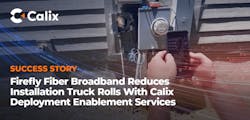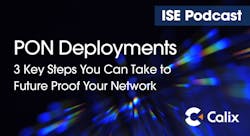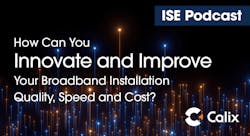Powering the Plant: HFC versus FTTH
Choosing the most energy efficient network architecture
As subscribers continue to demand more and more network bandwidth, operators of hybrid-fiber-coax (HFC) networks have some big decisions to make. Should they upgrade their plant to a next-generation HFC architecture, or deploy a Fiber to-the-Home (FTTH) architecture leveraging passive optical networks (PONs)?
Over the last 12-18 months, adoption of 10G XGS-PON has grown at a 4x-5x rate year over year as operators are increasingly choosing to deploy fiber-based PON networks. We see operators deploying 10G PON in a greenfield mode for new markets/coverage areas, or as an overlay in an existing market to address near-term network needs while future proofing the network and facilitating their migration from HFC over time.
With this explosive level of adoption taking place, operators are clearly making the decision to place big bets on FTTH & PON as the access technology of choice for the coming decades.
But pulling the trigger and making these investments require solid business cases and ROI justification. Beyond the technology benefits driven by FTTH PON, there must be compelling economic factors motivating aggressive moves by large numbers of operators.
While much has been written about the comparative capital costs of constructing these upgrades and new networks, less has been discussed documenting the ongoing operating costs, which over the life of the investment make up the bulk of the overall network expense. We all know, intuitively, that fiber should cost far less than metallic networks in terms of maintenance. However, the largest difference in operating expense is in an area which may surprise you: powering the plant.
HFC networks, old and new, require power to run the nodes and the amplifiers. Because these elements are located in the outside plant, a distributed power solution is required. Power supplies are distributed throughout the plant, with each serving a cluster of nodes and/or amplifiers. In most cases, back-up batteries protect against outages in the commercial power source. These batteries have a finite life and require periodic replacement.
In contrast, PONs are, by definition, "passive". An Optical Line Terminal (OLT) located in a central office or headend feeds the fiber plant. There are no amplifiers or other electronics in the plant, so there is nothing to power.
When adding PON as an overlay network to eventually replace an existing HFC network, it is desirable to make as much use of the installed fiber as possible. Installed spare fiber counts are probably far short of what is required for a PON. A remote OLT (ROLT) solution can serve to multiply these fibers to provide PON service without large-count extensions. In this case, power in the field will be required. How does that power requirement impact the savings of PON versus HFC?
Let us quantify the power used for HFC networks and see what could be saved if the same plant geography was instead served by a fiber-based PON network.
Download your complimentary copy today!
This white paper is coauthored by Jeff Brown ([email protected]), Director Product & Segment Marketing, Calix, and Jack Burton, Principal, Broadband Success Partners. For more information, please visit www.calix.com.
More Broadband Network Insights from Calix:
White Paper: Broadband Network Technology Evolution: Top Priorities and Challenges
Survey results: Leading service providers on network design strategies for capacity, security, subscriber trends, IPv4 exhaustion and more.
Video: Firefly Fiber Broadband Reduces Installation Truck Rolls With Calix Deployment Enablement Services
Get inspired by Firefly’s innovative approaches and best practices to improve installation processes and overall operational efficiency.
White Paper: Routing at the Network Edge
How integrating Layer 3 routing into the Layer 2 network architecture will help improve network resiliency, efficiency and subscriber security.
White Paper: Want a Better Network? 7 Design Best Practices From the Experts
With broadband demand on the rise, NOW is the time to optimize your network: built scalable, reliable and secure. Discover 7 best practices.
White Paper: Addressing Subscriber Security Challenges with Comprehensive Gateway Security Controls
Information you need to make smarter security choices for your subscribers and the future of their connected home.
Podcast: PON Deployments: 3 Key Steps You Can Take to Future Proof Your Network
Learn the steps and considerations for service providers to ensure the network is ready to meet subscriber demands today and in the future.
Recorded Webinar: From Millions to Billions, Broadband Funding Opportunities Are On the Rise
Looking for new broadband funding? Not sure if you’re eligible to apply? Explore your options and new government funding programs available.
Podcast: How Can You Innovate and Improve Your Broadband Installation Quality, Speed, and Cost?
Leveraging technology tools and field-proven installation processes to improve operational workflows, collaboration and documentation.
Video: Getting Your Community Connected to the Most Advanced Broadband Service
Looking for new broadband funding? Not sure if you’re eligible to apply? Explore your options and new government funding programs available.










